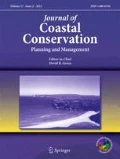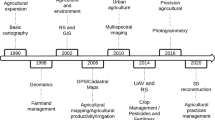Abstract
A comparison of current techniques for measuring elevations in the beach and near-shore zones is presented. Techniques considered include traditional methods such as ground survey along transects and airborne stereophotogrammetry, and also newer methods based on remote sensing such as airborne scanning laser altimetry (LiDAR). The approach taken was to identify a representative group of users of beach elevation data, elicit their requirements regarding these data, then assess how well the different methods met these requirements on both technical and financial grounds.
Potential users of beach height measurements include those concerned with coastal defence, coastal environmental management economic exploitation of the intertidal zone, and coastal flood forecasting. Three test areas in the UK were identified covering a range of such users and also different beach types. A total of 17 basic user requirements were elicited. For each requirement each method was scored according to the degree to which it could meet the requirement. Total scores were calculated and each method ranked. This was undertaken for all the requirements together, for a subset relating to survey of narrow beaches, and for a subset relating to survey of wide beaches. Approximate costs were also established for the top six methods.
Airborne stereophotogrammetry proved to be the best method technically, but was also the most expensive. Ground survey provides very good technical performance on narrower beaches at moderate cost. Airborne LiDAR can achieve good technical performance on both narrow and wide beaches at lower cost than ground survey. The satellite-based waterline method was also inexpensive and gave good results on wide beaches. An overall conclusion is that, while the traditional methods of ground survey and airborne stereophotogrammetry remain the best for engineering-related surveys requiring high levels of accuracy, airborne LiDAR in particular looks set to have a significant impact on beach survey for applications for which a vertical accuracy of 20 cm is acceptable, provided that its technology evolves satisfactorily.
Similar content being viewed by others
Abbreviations
- CC:
-
City Council
- DEM:
-
Digital Elevation Model
- EA:
-
Environment Agency
- EN:
-
English Nature
- LiDAR:
-
Arborne scanning laser altimetry
- SAR:
-
Synthetic Aperture Radar
- SPA:
-
Special Protection Area
- SSSI:
-
Site of Special Scientific Interest
References
Anon. 1993.Coastal defence and the environment: a guide to good practice. MAFF, London.
Anon. 1997a.Bathymetric mapping. Report BR-128/I, Remote Sensing Exploitation Division, ESA Publications Noordwijk.
Anon. 1997b.Evaluation of the LiDAR technique to produce elevation data for use within the Agency. National Centre for Environmental Data and Surveillance, EA, Bath.
Adams, G.F., Ausherman, D.A., Crippen, S.L., Sos, G.T., Williams, B.P. & Heidelbach, R. 1996. The ERIM interferometric SAR—IFSARE.Inst. of Electrical and Electronic Engineers. Aerospace Electronic Syst. Mag. 11: 31–35.
Alpers, W. & Hennings, I. 1984. A theory of the imaging of underwater bottom topography by real and synthetic aperture radar.J. Geophys. Res. 89: 10529–10546.
Balson, P.S., Tragheim, D.G., Denniss, A.M., Waldram, D. & Smith, M.J. 1996. A photogrammetric technique to determine the potential sediment yield from recession of the Holderness coast, U.K. In: Taussik, J. & Mitchell, J. (eds.)Partnership in coastal zone management, pp. 507–514. Samara Publishing Ltd, Cardigan.
Bierwirth, P.N., Lee, T.J. & Burne, R.V. 1993. Shallow seafloor reflectance and water depth derived by unmixing multispectral imagery.Photogram. Engin. Rem. Sens. 59: 331–338.
Brampton, A.H. 1990.Coastline monitoring. Hydraulics Research Report IT 345, Wallingford.
Collins, B.J. & Madge, B. 1981. A new method for monitoring beach movement.Chartered Land Surveyor/Chartered Minerals Surveyor 3: 4–11.
Comber, D.P.M. & Hansom, J.D. 1994.Estuaries management plans: Coastal processes and conservation, Morecambe Bay. Coastal Research Group, University of Glasgow, Glasgow.
Currie, A. 1997. Airborne single-pass InSAR at DERA.Proceedings of a Workshop on Single Pass Satellite Interferometry, London.
Estep, L.L., Lillycrop, W.J. & Parson, L.E. 1994. Estimation of a maximum depth of penetration of a bathymetric lidar system using a Secchi disk database.Mar. Technol. Soc. J. 28: 31–36.
Flather, R.A. & Hubbert, K.P. 1989. Tide and surge models for shallow water—Morecambe Bay revisited. In: Davies, A.M. (ed.)Modeling marine systems, Vol. 1, pp. 136–166. CRC Press, Boca Raton, FL.
Flood, M. & Gutelius, B. 1997. Commercial implications of topographic terrain mapping using scanning airborne laser radar.Photogramm. Engin. Rem. Sens. 63 (7): 327–366.
Gorman, L., Morang, A. & Larson, R. 1998. Monitoring the coastal environment; Part IV: Mapping, shoreline changes, and bathymetric analysis.J. Coastal Res. 14: 61–92.
Gutelius, B. 1998. Engineering applications of airborne scanning lasers: reports from the field.Photogram. Engin. Rem. Sens. 64(4): 246–53.
Henderson, F.M. & Lewis, A.J., 1998.Principles and applications of imaging radar. Manual of Remote Sensing, 3rd Ed., Vol. 2, Wiley, New York, NY.
Hesselmans, G.H.F.M., Wensink, G.J., Calkoen, C.J. & de Valk, C.F. 1996. ERS data to, support coastal and offshore applications.Proceedings of the Second ERS Applications Workshop, London, pp. 325–327.
Holland, K.T. & Holman, R.A. 1997. Video estimation of foreshore topography using trinocular stereo.J. Coastal Res. 13: 81–87.
Huising, E.J. & Gomes Pereira, L.M. 1998. Errors and accuracy estimates of laser data acquired by various laser scanning systems for topographic applications.Photogram. Rem. Sens. 53: 245–261.
Koopmans, B.N. & Wang, Y. 1995. Measurement of land-sea transition from ERS-1 SAR at different phases of tidal water.Netherl. Rem. Sens. Board Rep. 95–20: 1–64.
Madsen, S.N., Martin, J.M. & Zebker, H.A. 1995. Analysis and evaluation of the NASA/JPL TOPSAR across-track interferometric SAR system.Inst. of Electrical and Electronic Engineers Trans. Geosci. Rem. Sens. 33: 383–91.
Mason, D.C., Davenport, I.J., Flather, R.A., Gurney, C., Robinson, G.J. & Smith, J.A. In press. A sensitivity analysis of the waterline method of, constructing a digital elevation model for intertidal areas in an ERS SAR scene of Eastern England.Estuarine Coastal Shelf Sci.
Mason, D.C., Amin M., Annan, J., Davenport, I.J., Flather, R.A., Gutney, C., Kennett, M., Robinson, G.J. & Smith, J.A. 1998.Intertidal digital elevation models using satellite data (INDUS). British National Space Centre Earth Observation LINK project final report, ESSC, Reading.
Mason, D.C., Davenport, I.J. & Flather, R.A. 1997. Interpolation of an intertidal digital elevation model from heighted shorelines: a case study in the western Wash.Estuarine Coastal Shelf Sci. 45: 599–612.
Mason, D.C., Davenport, I., Flather, R.A., McCartney, B. & Robinson, G.R. 1995. Construction of an inter-tidal digital elevation model by the ‘water-line’ method.Geophys. Res. Lett. 22: 3187–3190.
Massonnet, D. 1997. Satellite radar interferometry.Sci. Am. 276: 32–39.
Morton, R.A., Leach, M.P., Paine, J.G. & Cardoza, M.A. 1993. Monitoring beach changes using GPS surveying techniques.J. Coastal Res. 9: 702–720.
Neill, L.E. 1994. The accuracy of heighting from aerial photography.Photogramm. Rec. 14: 917–942.
O’Regan, P.R. 1996. The use of contemporary information technologies for coastal research and management—a review.J. Coastal Res. 12: 192–204.
Ramsey, E.W. 1995. Monitoring flooding in coastal wetlands by using radar imagery and ground-based measurements.Int. J. Rem. Sens. 16: 337–356.
Slama, C. 1980.Manual of photogrammetry. American Society of Photogrammetry, Falls Church, VA.
Tateishi, T. & Akutsu, A. 1992. Relative DEM production from SPOT data without GCP.Int. J. Rem. Sens. 13: 2517–2530.
Author information
Authors and Affiliations
Corresponding author
Rights and permissions
About this article
Cite this article
Mason, D.C., Gurney, C. & Kennett, M. Beach topography mapping—a comparsion of techniques. J Coast Conserv 6, 113–124 (2000). https://doi.org/10.1007/BF02730475
Received:
Revised:
Accepted:
Issue Date:
DOI: https://doi.org/10.1007/BF02730475




